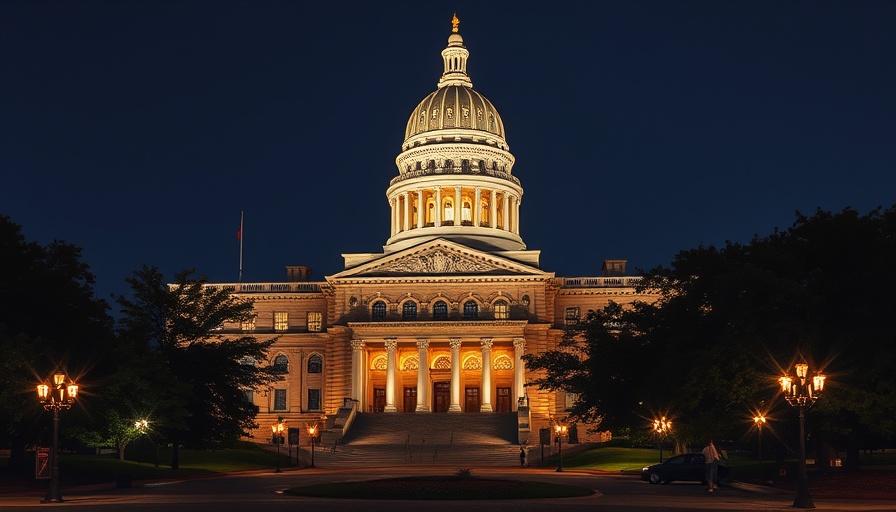
Vandalism at the Capitol: A Disturbing Breach of Security
In a concerning turn of events, the Minnesota State Capitol faced a significant security breach when a person with a criminal background allegedly trespassed and vandalized the premises overnight. This incident, happening mere weeks after a politically motivated shooting left two lawmakers injured, raises troubling questions about safety protocols in state buildings.
The Impact of Recent Events on Political Safety
This act of vandalism did not occur in isolation; it follows a shocking event where four individuals were shot, including the tragic death of Rep. Melissa Hortman and her husband. The recurrence of violent attacks aimed at lawmakers has created a climate of fear and anxiety among public officials, as expressed by state leaders. Senate Republican Leader Mark Johnson emphasized the urgent need for the State Patrol and Capitol security to review existing protocols to prevent future incidents.
Lawmakers Demand Accountability
In statements from lawmakers, frustrations regarding law enforcement's response were palpable. House Speaker Rep. Lisa Demuth voiced her disappointment at the lack of arrests made following the incident. “Anyone who trespasses in any building — let alone the State Capitol — should be arrested and prosecuted for breaking the law,” she remarked. This cry for justice stresses the public's expectation for accountability and thoroughness from the authorities entrusted with their safety.
Public Sentiment: Security vs. Freedom
This breach at the Capitol opens the floor to discussions about security versus personal freedoms. While security measures are crucial in safeguarding public officials, they must be balanced with maintaining accessible government facilities. In a democracy, the public’s right to engage with their representatives is paramount, yet this must not come at the cost of their safety.
Looking Ahead: Strengthening Safety Measures
The incident has highlighted the urgent need for a review and enhancement of security protocols in government buildings. As the state approaches potential solutions, Massachusetts and California have been exploring various security models that increase safety without compromising public access. Learning from these examples can serve as a blueprint for Minnesota to bolster its defenses against future threats.
Engaging the Community in Legislative Safety
Community involvement in addressing these security concerns is critical. Citizens can urge their local representatives to advocate for better safety measures at not only the Capitol but also in their respective districts. Hosting community forums to discuss safety might bridge communication gaps and foster a sense of collaboration between lawmakers and residents.
In a world where public displays of violence are increasingly prevalent, it is vital for society to come together to support and promote the safety of those who serve in elected office. Encouraging citizen engagement and legislative transparency can lead to a more secure future.
 Add Row
Add Row  Add
Add 




Write A Comment